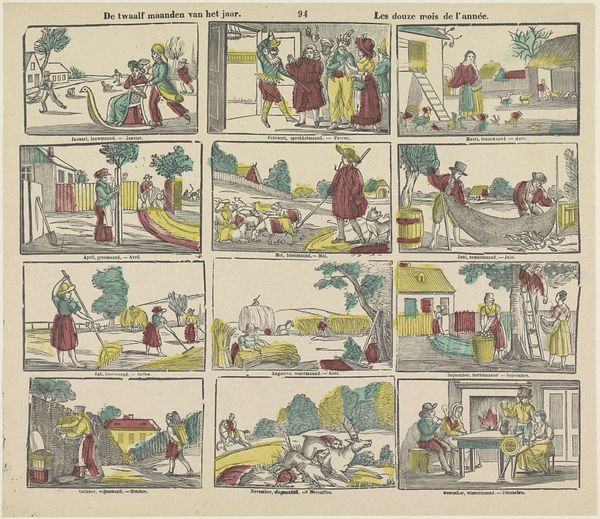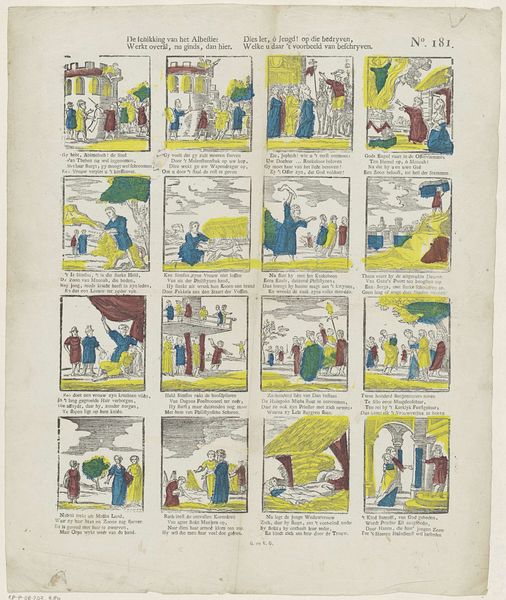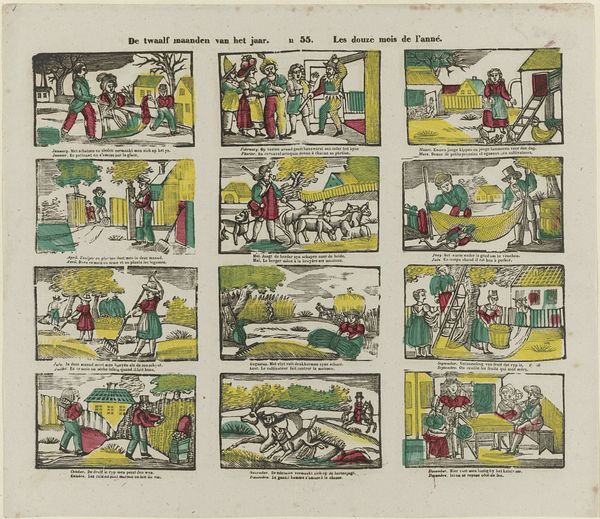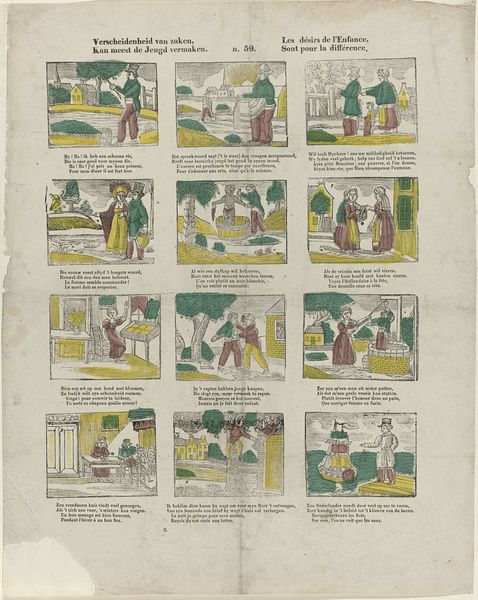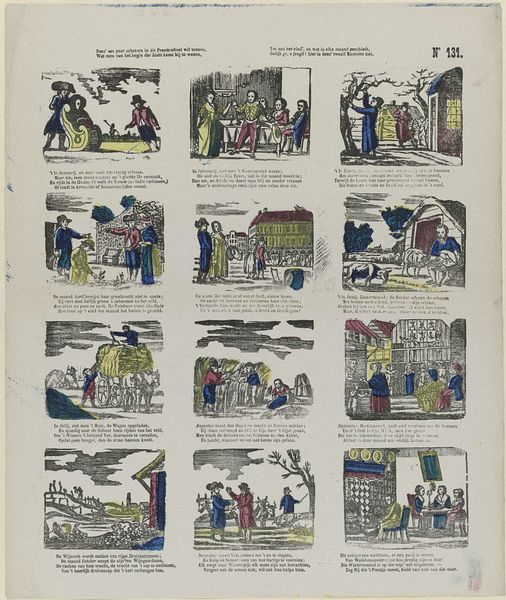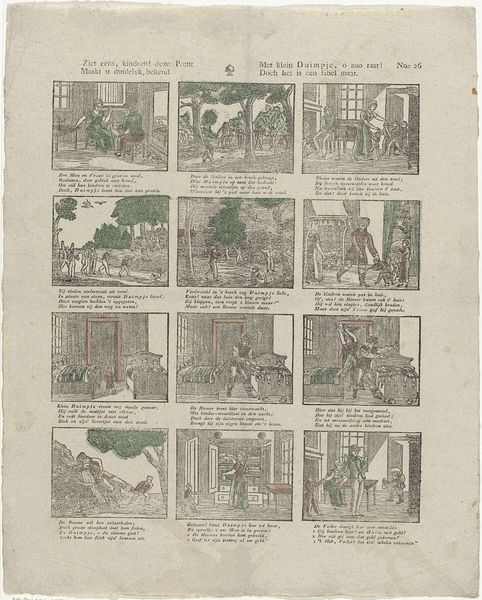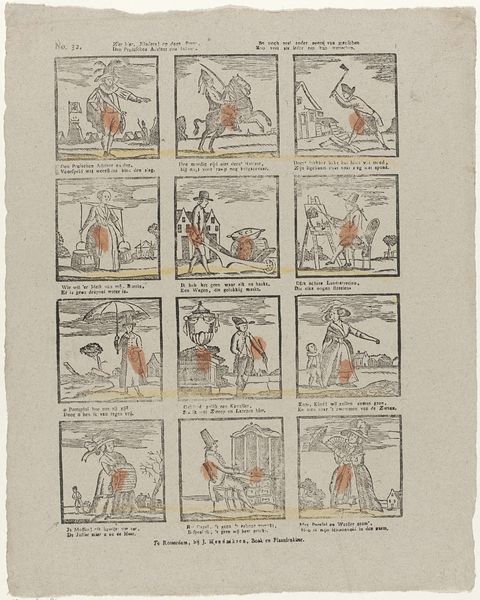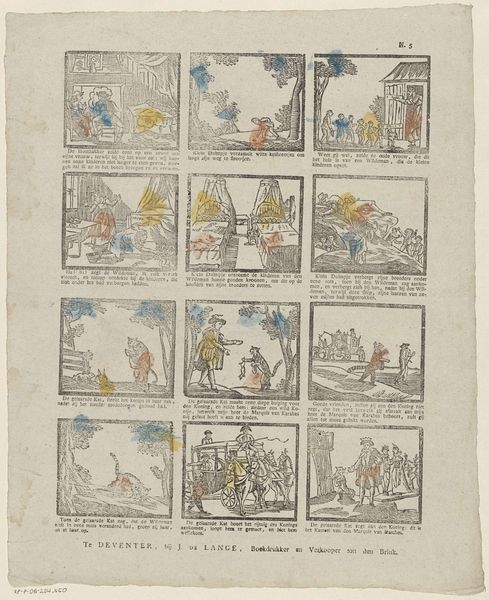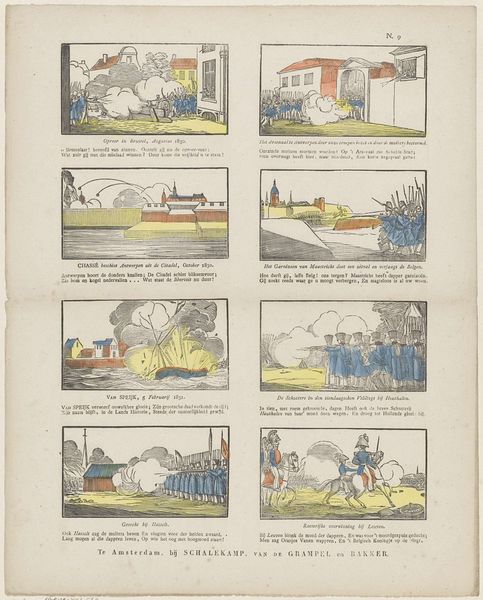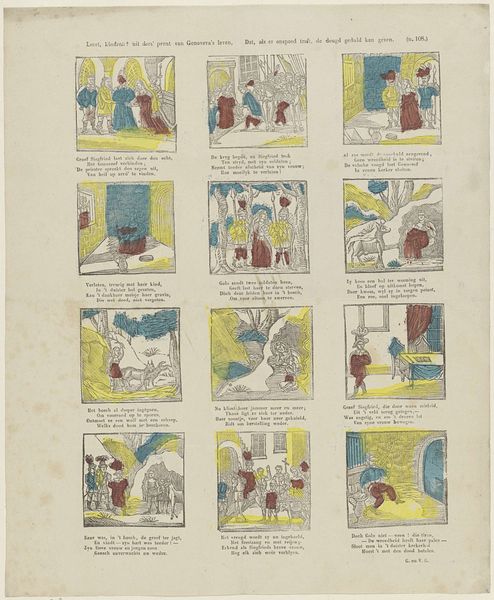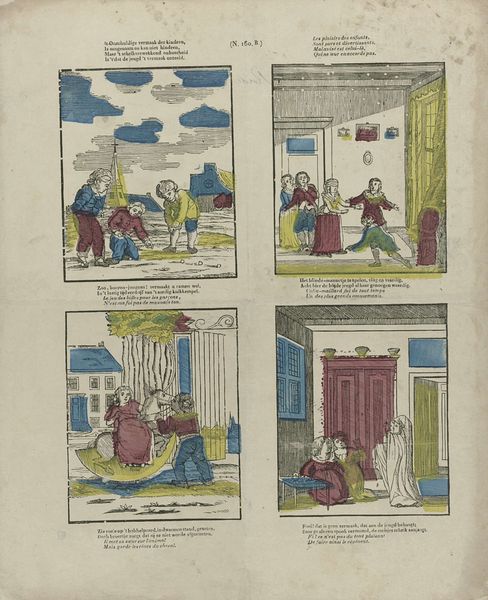
Histoire du petit Chaperon Rouge / Historie van het kleyn Rood Kapje / Histoire du bûcheron enchanté / Historie van den houthakker 1833 - 1856
0:00
0:00
mixed-media, print, woodcut, engraving
#
mixed-media
#
narrative-art
# print
#
folk-art
#
woodcut
#
genre-painting
#
engraving
Dimensions: height 392 mm, width 324 mm
Copyright: Rijks Museum: Open Domain
Curator: This multi-paneled print by Glenisson & Van Genechten, titled "Histoire du petit Chaperon Rouge / Historie van het kleyn Rood Kapje / Histoire du bûcheron enchanté / Historie van den houthakker," presents, as the name indicates, narratives. Its date range is between 1833 and 1856, combining various mixed-media approaches including engraving and woodcut. It has such an almost comforting, antique charm to it. Editor: It’s immediately clear there is an overarching principle of organizing discrete narrative moments on a single page, with rudimentary composition principles binding the blocks together. Note the use of color - consistent, yet flat, deployed for clarifying form rather than achieving photorealistic effects. There is also a real interplay between surface and form in each little section of narrative contained within the panels. Curator: Exactly. Look at how the recurring motifs in each panel signal thematic throughlines, and how effectively they evoke cultural touchstones and childhood experiences. The print blends the familiar tale of Little Red Riding Hood with a lesser-known narrative about an enchanted woodcutter. Do you think they might relate on some deeper, symbolic level? Editor: Symbolically, this piece shows the early stages of printmaking in which artists are more concerned with representation of ideas and ideals as opposed to precise or perfect forms. Note also the heavy lines denoting figure and field, form and content are presented almost on par within each scene. There’s little perspective to create the idea of looking 'into' the page itself, so there’s this focus more on being on the page than within it. Curator: Right, the work seems almost like an illuminated manuscript page, adapted to a wider, popular audience. This gives us insight into 19th-century storytelling. It’s almost democratized through printmaking and broad distribution! Editor: It definitely makes us consider how production constraints influence form. This piece reveals a very fundamental visual syntax. And that directness does provide a fascinating portal into understanding the way stories were disseminated and consumed then.
Comments
No comments
Be the first to comment and join the conversation on the ultimate creative platform.
